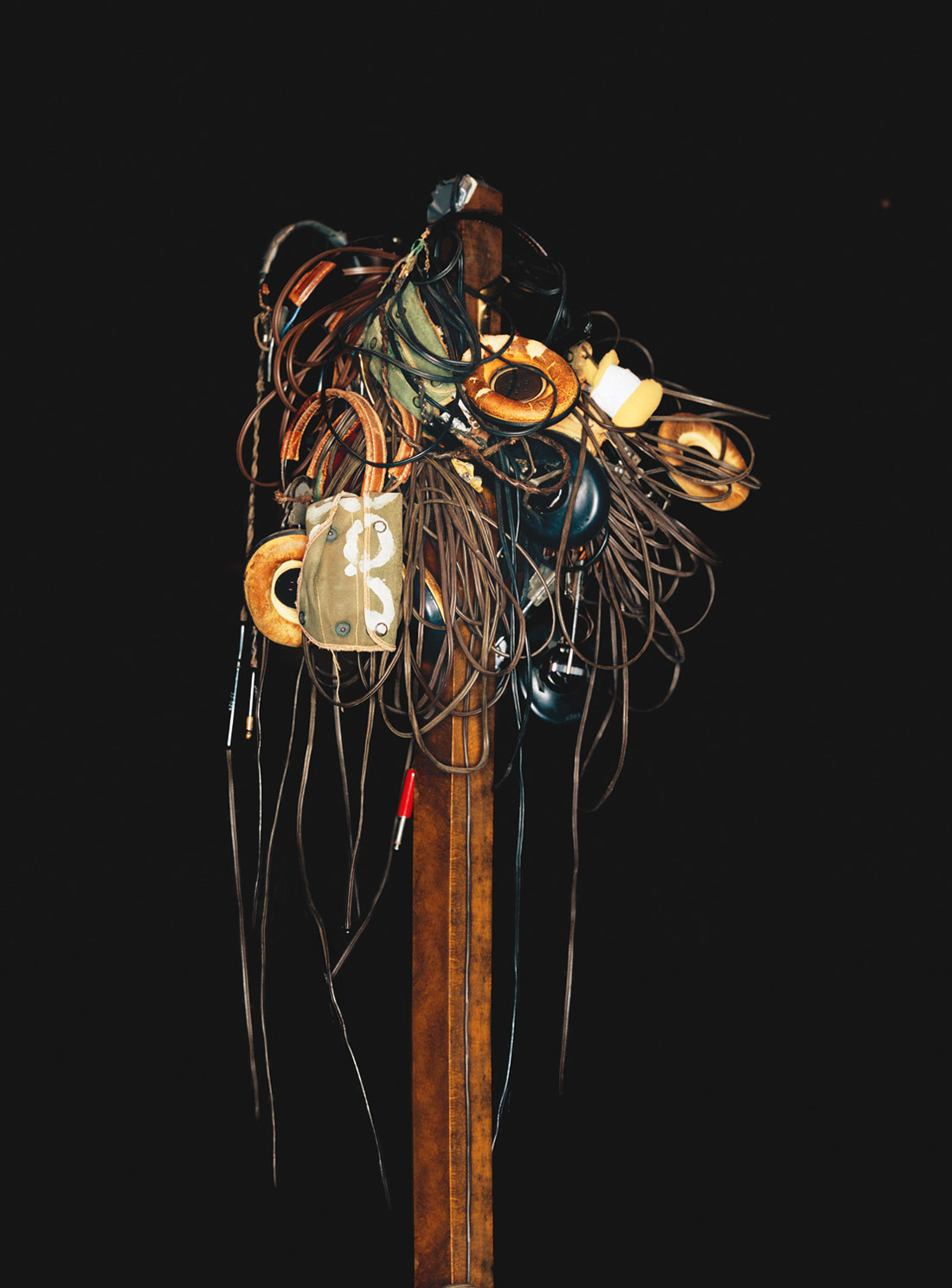I’m a huge fan of Arturia and their virtual synth designs. They are, I feel, one of the best software synth developers around. I love using their “V” synths (Tape Op #41, 57, 67) in various DAW sequencers for sound design and general nerdlery. So I was excited to get my mitts on their hardware synth platform, Origin.
When rackmounted, the Origin Desktop version takes up 6U but seems a bit more compact than comparable analog synths like the rackmount edition of the Moog Voyager (Tape Op #40). It has a relatively slim, but sturdy profile, comes in retro-future white, and the controls are laid out with a general nod to traditional analog synths. The hardware features high-quality pots, buttons, lights, a 320 x 236 pixel color LCD, and even a high-resolution programmable joystick. There is a TR-808 analog-style step sequencing section as well, in addition to universal ADSR, filter, FX and LFO controls.
The Origin is an independent unit and does not require a connected computer to make noise; it is a standalone, modular, DSP-based system utilizing the same TAE engine which is used by Arturia’s virtual synth products. It only connects to a desktop computer for preset backup/management or firmware updates, via a software application called Origin Connection. Here’s where I ran into my first hiccup with Origin, as its integration with the Origin Connection software was troublesome at first. I experienced a few failed attempts to upgrade to latest firmware, version 1.3. I had “No Origin found” errors when connecting the Origin directly to my Mac via USB and also experienced application crashes even after troubleshooting the installation and going so far as to try a different computer. After the third or fourth attempt, I finally managed to set the firmware update in motion, at which point it took about 45 minutes to complete (to be fair, the update literature warns of the lengthy wait). After the update and a reboot of the Origin, the connection issues seemed to stabilize, but I still felt relieved when I no longer was tied to the computer. It’s surprising that the Mac Origin Connection software doesn’t hold up to the Origin hardware, given that this platform is driven in large part by clever software development. Beyond preset dumps, there is no clear benefit to the Origin Connection software, as it does not integrate with the rest of the Arturia line; you can’t share presets between, say, a VST of CS-80V and the Origin. Note that Arturia was very quick to respond and help with any and all technical issues, and we had these road bumps sorted quickly.
I have mixed feelings about the first-impression experience of playing the Origin. The presets are extensive, well-organized, and easy to access, but are a bit heavy on the trance/techno sounds and sequences. Don’t get me wrong, the Arturia TAE engine driving the extensive instrument library sounds awesome, but the Origin UI is a little less than intuitive. The learning curve is steep, as one should expect from such a deep system, and the playing experience definitely benefits from a well-written manual and online tutorials.
The steep learning curve is worth it if you get excited about the idea of creating new sounds. The modular foundation of the Origin synth makes it possible to take a module from the CS-80V, mix it with one module from the Minimoog V, one from the Prophet V, and another one from the Jupiter-8V, for example. Using the full potential of the synth’s modularity means you can mix these virtual vintage synth modules and create an entirely new synthesizer of your own.
Once you get into the swing of things, programming your own sounds is a lot of fun and very rewarding. A good MIDI keyboard with aftertouch is recommended, but most of the controls which aren’t already dedicated (54 knobs!) are easily mapped to the eight flexible rotary encoders next to the screen, or to the joystick. As I mentioned earlier, the controls are logically laid out and feel solid, with a high degree of resolution. The ergonomics are great, but I would have liked to have a contrast control for the LCD — it’s bright, but its off-axis viewing seems limited for most screens. The performance possibilities are an area where the Origin really stands out, as you can assign up to four separate programs to a keyboard simultaneously, each with its own dedicated stereo balanced output.
Speaking of I/O, the Origin has plenty, with ten balanced TRS outputs, a headphone out, S/PDIF out, three MIDI ports, and USB 2.0. The Origin even has two TRS input jacks, and, yes, I successfully ran live audio through the 4-pole filter section of an emulated Minimoog and then into the FX module of the Origin — happy to report that it sounded incredible!
I see Origin as a system that is clearly flexible, is vast in its potential, and has plenty of room to grow with future updates — despite the few minor bumps in the road I experienced. And let’s not forget that it sounds amazing. Although pricey, I imagine this being a great tool for live performers or remix engineers who aren’t afraid to roll their sleeves up and RTFM. ($1999 street; www.arturia.com)
–Dana Gumbiner, www.stationtostationrecording.com
Plug-Ins, Virtual Instruments | No. 143
Vocoder V, MicroFreak Vocoder, & MicroFreak V3 Update
by John Baccigaluppi
I’ve written about vocoders in previous issues of Tape Op, so I won’t go into a lot of theory here, but check this review for more of the basic operational theory of vocoding. Arturia...




_disp_horizontal_bw.jpg)